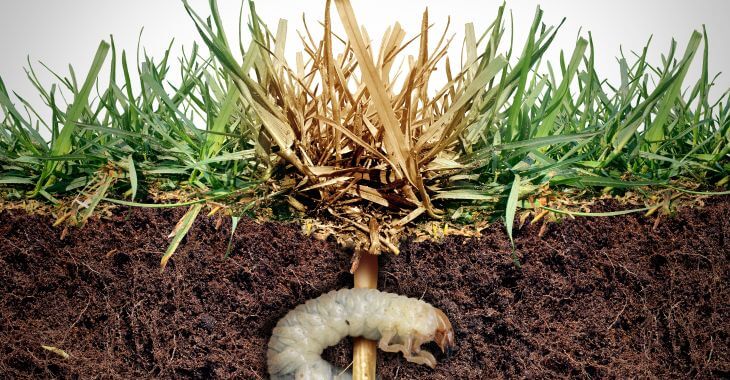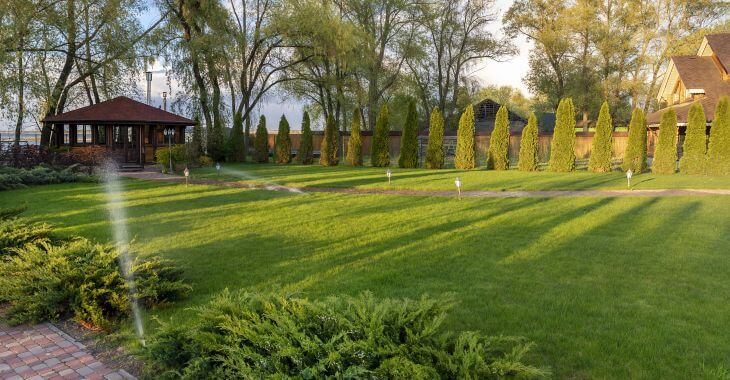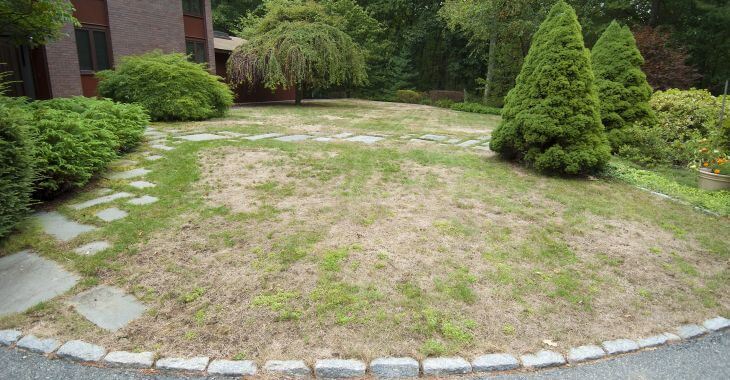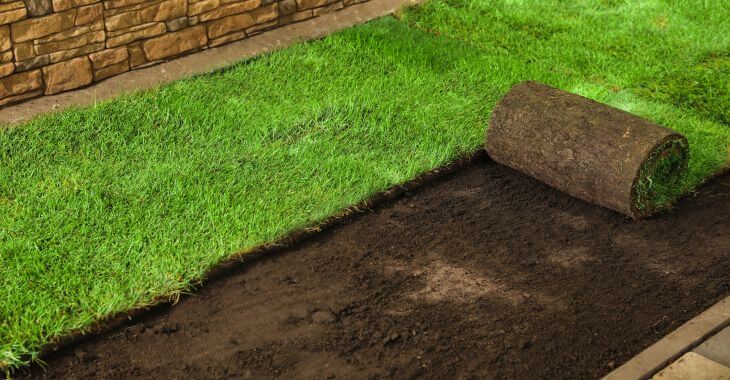How to Combat Chinch Bug Damage to Your Lawn

Chinch bugs are a common lawn pest that can wreak havoc on your grass, leaving it brown, dry, and unhealthy. These tiny insects thrive in hot, sunny climates and feed on the sap of turfgrass, causing severe chinch bug damage if left unchecked.
If you are concerned about infestations of these pests ruining your landscaping, there are options to combat chinch bugs. Understanding how to identify, prevent, and apply the best chinch bug treatment can help restore your lawn to its lush, green state.
Signs of Chinch Bug Damage
Chinch bug damage often resembles drought stress, making it challenging to detect initially. However, specific signs can help you determine if chinch bugs are the culprits:
- Brown or Yellow Patches: Look for irregular patches of discolored grass, particularly in sunny areas.
- Spread of Damage: Damage often expands outward from the initial spot, creating larger, dead areas over time.
- Presence of Chinch Bugs: Check the thatch layer of your lawn for small, black bugs with white wings. A heavy infestation typically means more than 20-25 bugs per square foot.
If you notice these signs, swift action is crucial to minimize further damage. The quicker you begin chinch bug treatment, the better chance you have of restoring a healthy lawn.
Preventing Chinch Bug Infestations
The best way to protect your lawn from chinch bug damage is to implement preventive measures. Healthy grass is less susceptible to pests like chinch bugs, so keeping your lawn in good condition is the first line of defense.
1. Mow and Water Properly
Avoid cutting your grass too short, as this can stress the turf and make it more vulnerable to chinch bugs. Regular watering, especially during dry spells, helps maintain strong, resilient grass.
2. Aerate Your Lawn
Aerating the soil improves its ability to absorb water and nutrients, reducing the thatch layer where chinch bugs hide.
3. Apply Fertilizer Cautiously
Excess nitrogen can encourage thick thatch, which creates a favorable environment for chinch bugs. Use balanced fertilizers to avoid over-fertilization.
Proactive lawn care minimizes the risk of chinch bug infestations and helps your grass recover quickly if these bugs do appear.
The Best Chinch Bug Treatment
When chinch bug damage becomes evident, applying an effective treatment is key to controlling the infestation and preventing further harm. The best chinch bug treatment typically involves a combination of manual, chemical, and natural methods.
1. Spot Treatments
For small infestations, apply targeted insecticides directly to the affected areas. Choose a product labeled for chinch bugs and follow application instructions carefully to ensure effective control.
2. Systemic Lawn Insecticides
Systemic insecticides can provide comprehensive control for widespread infestations. These products penetrate the soil and target chinch bugs where they feed, delivering long-lasting protection for your entire lawn and landscaping.
3. Natural Remedies
If you prefer eco-friendly solutions, try introducing natural predators like ladybugs or applying neem oil to your lawn. These methods are less harmful to beneficial insects while still combating chinch bugs without the use of chemicals or insecticides.
4. Professional Lawn Care Services
For severe infestations or if DIY treatments are ineffective, professional lawn care services can provide advanced treatments tailored to your lawn’s specific needs. Contact a local landscaper for information on the best chinch bug treatments available.
Repairing Chinch Bug Damage
Once chinch bugs are under control, repairing the damage they caused is essential to restore your lawn’s appearance and long-term health. Damaged grass can leave unsightly bare spots, which are vulnerable to weed growth and further stress. Follow these steps to rejuvenate your lawn:
1. Reseeding or Sodding
Start by removing all dead grass and debris from the affected areas. Loosen the topsoil slightly to provide a good base for new grass. Apply high-quality grass seed suited to your region or lay fresh sod for faster results. Water thoroughly after reseeding or sodding to encourage healthy root establishment.
2. Regular Watering
Keep the soil consistently moist to promote germination and root growth. Watering should be done deeply but less frequently to help the roots grow strong and resilient. Adjust watering habits based on weather conditions to avoid oversaturation or drought stress.
3. Fertilize Appropriately
Apply a balanced, slow-release fertilizer to deliver essential nutrients that promote grass recovery. Avoid over-fertilizing, as excessive nitrogen can create thick thatch, which chinch bugs thrive in. Focus on providing the nutrients your recovering lawn needs to rebuild its strength.
4. Aeration and Thatch Control
Aerate the soil to improve oxygen, nutrient, and water penetration, especially in areas compacted by chinch bug damage. If there’s excessive thatch (a layer of dead grass and organic material), consider dethatching to prevent future pest infestations.
5. Monitor for Recurrence
Once your lawn starts to recover, continue monitoring for chinch bug activity. Inspect your yard regularly and address small infestations early to avoid another round of damage.
By combining these steps with consistent care, your lawn will recover from chinch bug damage, regaining its lush, healthy appearance over time.

Combat Chinch Bug Damage Today
Don’t let chinch bug damage ruin the beauty of your lawn. By recognizing the signs, implementing preventive measures, and applying the best chinch bug treatment, you can protect your turf and enjoy a healthy, vibrant yard year-round.

